Solar panels for sheds – everything you need to know
Power your shed with solar power alone to help the environment and save you money

Something you may not yet have considered, but really makes a lot of sense is exploring solar panels for sheds. After all, they offer the opportunity to power your prized outhouse directly with the energy of the sun.
Getting power to a shed can be tough, with the need to run armoured cable from your home, often digging up the garden in the process. And that doesn't even take into consideration the need to get a qualified electrician in to connect you up to your home's power supply.
All that means getting mains power to a shed can be expensive, time consuming and potentially destructive to your garden and home. Solar panels are a viable alternative as it means getting power directly from the shed's current position and running that inside. Therefore using solar power for sheds means fewer cables, less destruction and cheaper longer term running costs.
This guide will share all you need to know about solar panels for sheds. To be clear this will mainly focus on solar panels as a source of overall power, as opposed to solar powered lighting systems only.
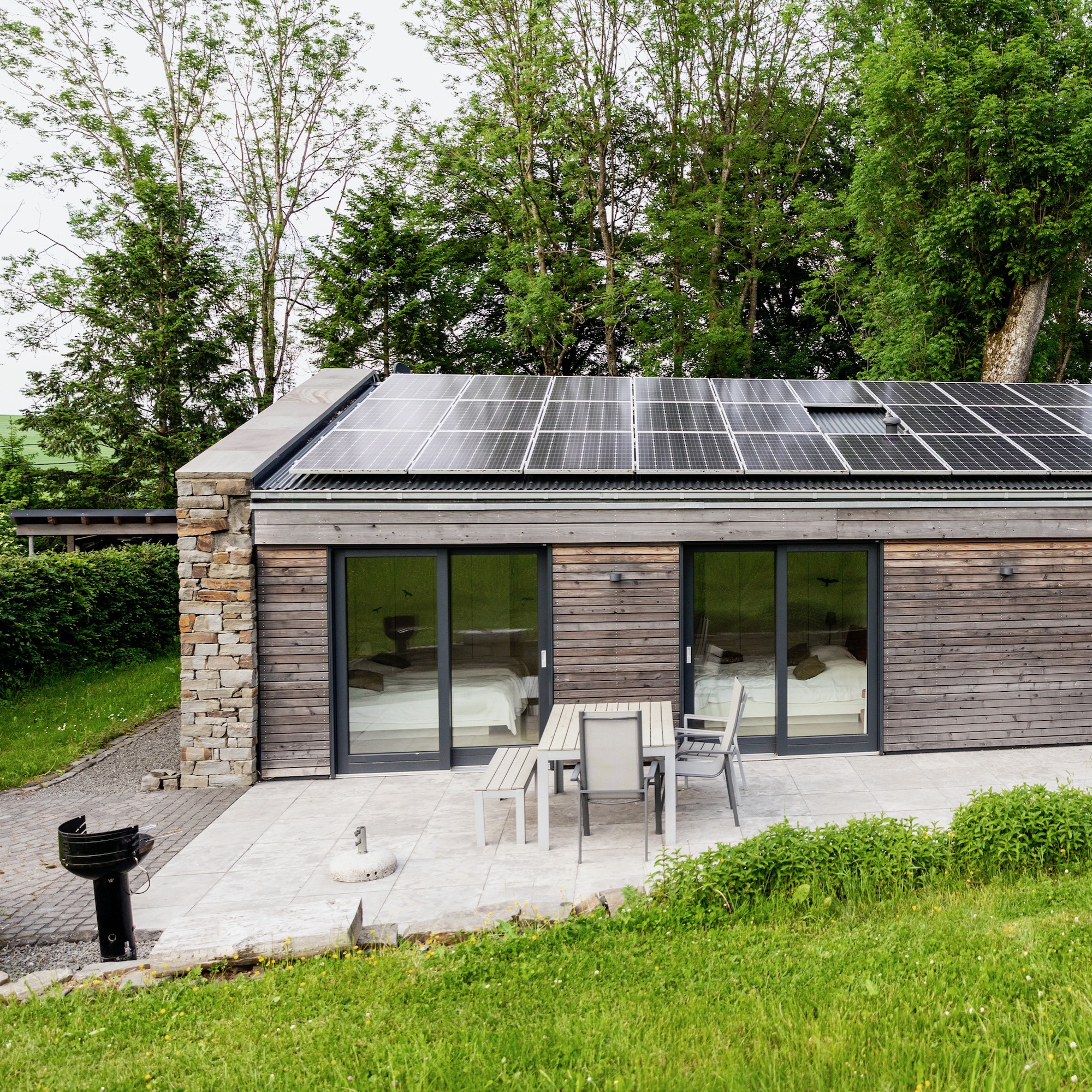
Can I put solar panels on a shed in the UK?
Yes, in the UK solar panels for sheds are fine. The lack of sun in some areas might not make this ideal though. So be sure your shed will have lots of solar access if you want to make sure the power supply is enough.
If your shed is tucked away under the shade of a tree, you may want to reconsider solar. Or look into getting the tree cut back to free up light. It's also important to read up on how to clean solar panels to ensure they're clear of debris and working well.
According to CEO of The Posh Shed Company, Richard Frost, our sheds are getting bigger and they’re getting posher. And that's making features like solar panels more and more desirable. 'We've started offering sheds with solar power, allowing you to stay outdoors longer by powering a lamp, speakers and even your phone charger,' he explains.
Get the Ideal Home Newsletter
Sign up to our newsletter for style and decor inspiration, house makeovers, project advice and more.
As mentioned there are two types of solar power for sheds:
1. Solar lighting panels
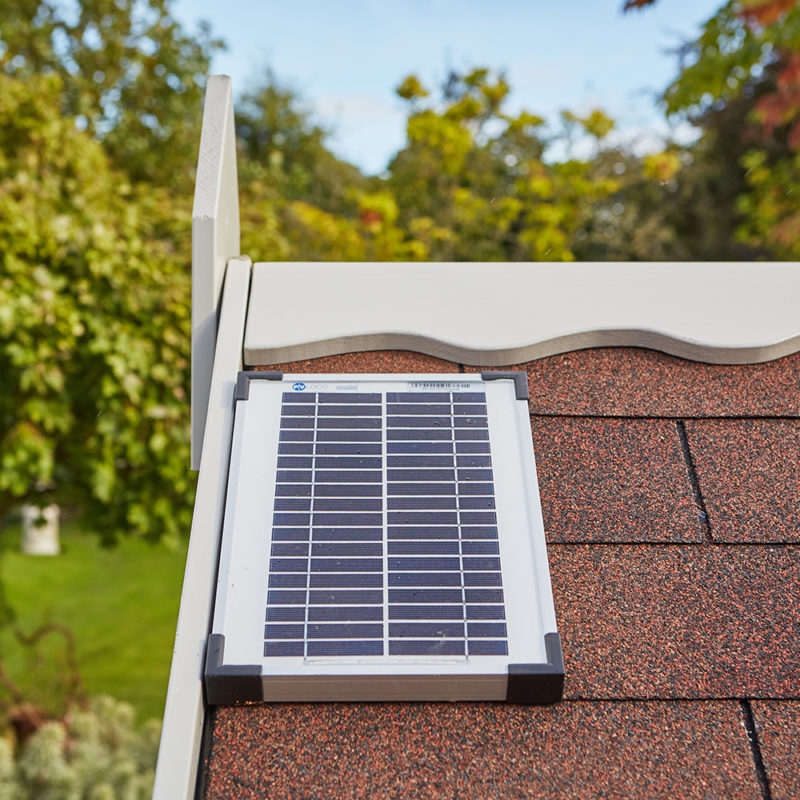
If you don't need mains power in your shed and simply want some lights in there then these can be the simplest – and cheapest – option. These come with solar panels and cabling that run to internal and sometimes external lights. These will generally come with a decent battery setup so that you have enough power stored away after a day to enjoy plenty of light in your shed for the darker hours.
The Posh Shed Company's Hubi 2k lighting and power system, £219, is an easy way to get light into your shed. And it has two USB ports for mobile phones and other devices. Smart internal electronics ensure the system never gets overcharged.
2. Solar roof panels
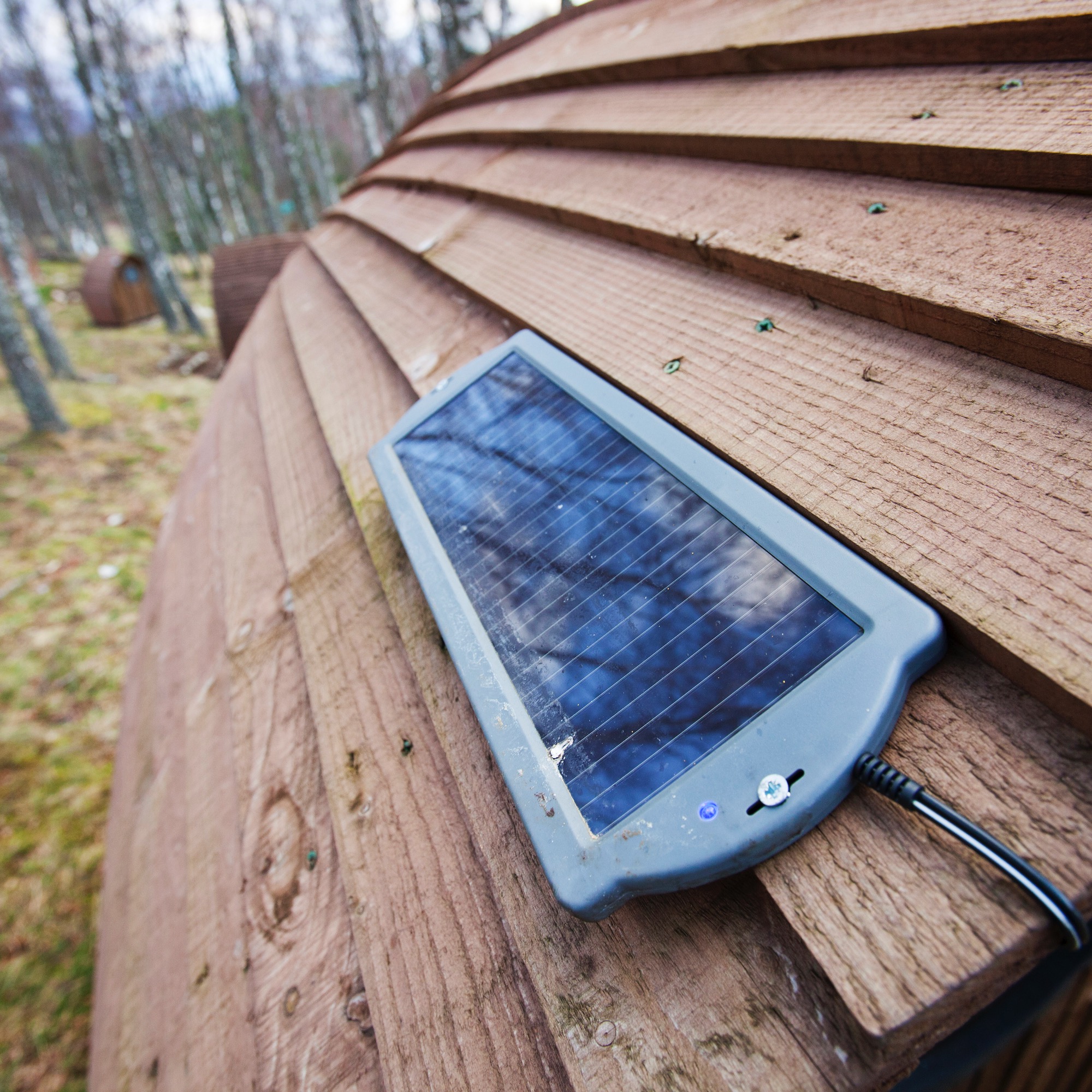
The other type of solar is more like the type you see on houses. This means solar panels on your shed roof, cabling to an inverter and sockets to plug in devices as well as power for lighting. These will also require a battery system to make sure you can harvest all that solar power in the darker times, when you likely need more power for lighting and heating.
So if you're only light to help access tools when it's darker, then the first solar lights option is fine. But if you want more of a home office or workspace setup – with heating, lighting, broadband, powertools and the like – then you'll want to go for the second full solar setup.
In both cases, since this is a relatively basic setup with no connection to the main power grid, it can be something you setup yourself. Alternatively you can pay an electrician to do that side of things to ensure everything is safe and will be guaranteed to work correctly. More on how to setup the power side of things later in this guide.
What are the pros of solar panels for sheds?
While solar power sounds like a wonder option, saving you money, space, equipment and helping the environment all at once, there are still positives and negatives. Here are the main ones you should consider before deciding on solar panels for your shed.
1. Power is free
One really big positive of solar power is that once you're setup and running it's free. That means you can be powering your computer, charging your phone, heating the space, running lights and even powering tools – all without paying anything. You will be harnessing the power of the sun and storing it in your own batteries to use as and when you need.
So once the initial outlay of equipment and setup is done, the savings you make on not paying for power from the grid should cover the cost of the solar panels and beyond.
Get a quote to install solar panels on your home from The Eco Experts
Fill out the form to get a free quote for solar energy solutions for your home. Whether you want to cut your carbon footprint, save money on your bills – or both – The Eco Experts can help you find the right products for your home.
2. Setup is easier
The ease of setup is another positive for solar. Since hooking up a shed to mains power requires a professional electrician and potentially a lot of cabling, run up your garden, the costs can really add up. Not to mention that you may need to dig out a channel to hide the cable safely and drill holes in your home to access your power box.
None of that is needed for solar, where everything stays on and in your shed. That also means far less cabling, keeping costs down.
3. You're going green
Solar power might be great for you, as it's free, but it's also helping the environment. You're taking the strain off the grid by not consuming more power from potentially non-renewable sources. Instead you're harnessing the power of the sun to remain as carbon neutral as you can.
And even when you know longer need them or are ready to replace them, solar panels are recyclable, so that's another green box ticked.
What are the cons of solar panels for sheds?
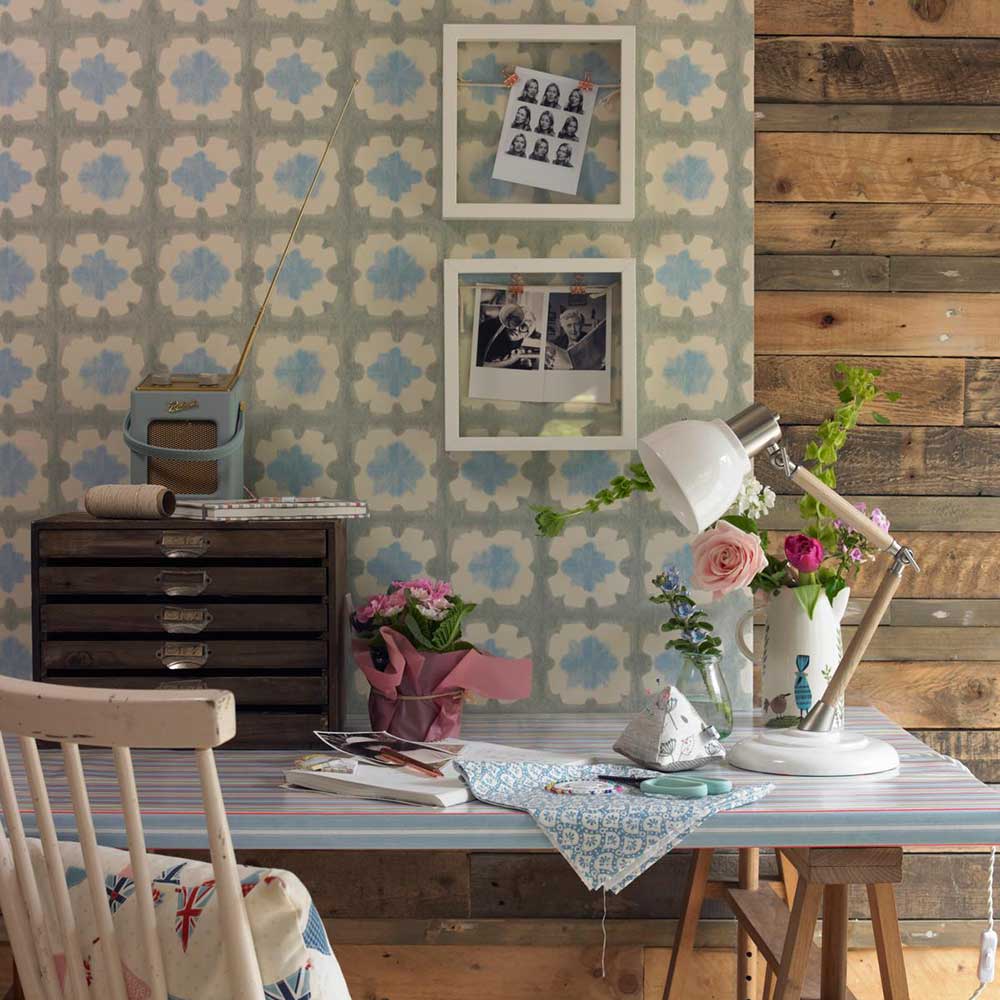
While solar panels for sheds - or anywhere on your property - have a lot of bonuses, it's important to be aware of the other side of the coin. Solar panel disadvantages are should be considered before you make the leap.
1. Setup isn't cheap
The initial outlay for your solar setup can add up. You'll need to buy the solar panels themselves, any cabling, an inverter, controller unit and your battery system. While you will pay this back over time, with the savings on power used, it does mean you need to front that money initially.
You may be able to get a grant for solar panels, depending on how you are going to use them.
2. Not always enough power
Solar is limited by your access to the sun. So unless you have larger roof space for big panels and you get lots of sun, some devices may not be supported by solar.
If you're planning on running a workshop using solar power for sheds, for example, you'll need a lot of energy and big inverters to run power tools. Or if you want to heat the shed space constantly that'll use a lot of power too, which solar alone may not be able to support where you are.
It's worth looking at pigeon proofing solar panels, too, as the birds can affect how well the panels work.
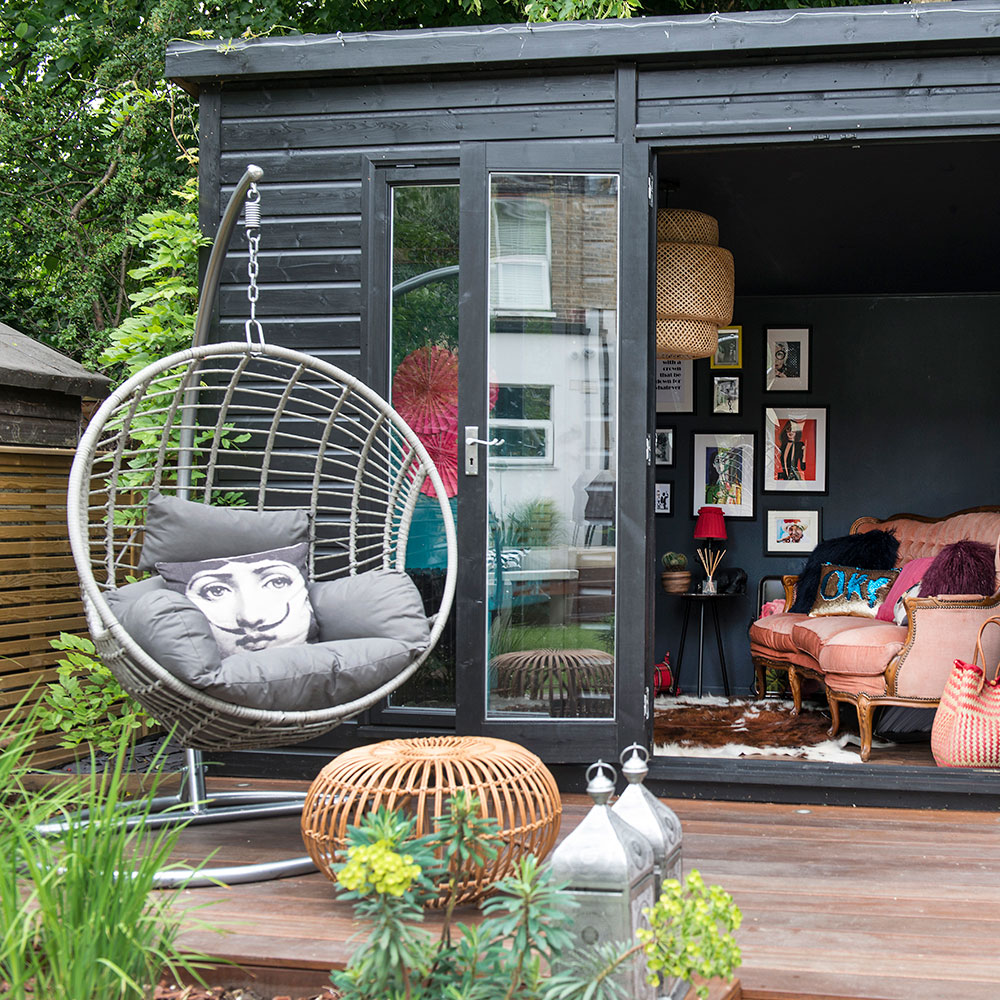
What size solar panels do I need for my shed and what roof space do I need?
The size of panels and the amount of roof space needed will vary from person to person based on a few things. Mainly it's going to be about need, so what your shed is used for in terms of power consumption. The second will be how much sunlight you get.
So if you're in need of lots of power, or you have poor light access, then you'll want to go for larger panels and more batteries so you can build up your power back-up slow and steady.
But if you only want to power lights and charge a phone, for example, you can go for smaller solar panels for sheds and a basic battery setup.
Examples of power needed for different devices
This is the power needed for the devices at any one time. Realistically, think about how many of the below you'll have running at any one time.
- Smartphone charger: 5W
- Desk lamp: 50W
- Laptop: 50W
- LCD TV: 200W
- Desktop computer (17-inch screen): 400W
- Power drill: 500W
- Commercial printer: 800W
- Jigsaw power tool: 900W
- Circular saw: 3,000W
- Electric oven: 5,000W
So add up what you need to work out the power you need to attain. It's a rule when using an inverter to pick one that adds 20-50% more than the minimum total power required. It should also be capable of offering more than twice the amount of power required for the most power hungry device.
What size shed solar panel do I need?
Panel size is varied, but how many solar panels for sheds are needed is vital to know, too.
For basic needs, like lights and charging smaller devices, a 50W panel setup can be enough. But if you're going bigger – by running underfloor heating, perhaps – then you're going to want at least three 150W solar panels to do the job.
At the higher end are 250W and 320W panels, which you'll typically find in the average home solar panel setup. These are what you may want to look at if you have a larger shed and want to use this supply for power tools.
How much roof space do I need?
The larger your roof space, the more solar panels you can fit on and the more power returns you can enjoy. So, for smaller sheds, you may be limited to a certain number of panels. The alternative is to use ground based panels, but that does require more fixing equipment and garden space to get them setup.
For an average house setup of 4kW, which is enough for a three-bed family home, you'll need sixteen 250W solar panels. That adds up to a total space of just over 25 metres square. That's an extreme power supply example. Realistically, nearly all sheds are going to be smaller and require far less space.
In metres square, for a 4kW setup you need over 25, for a 3kW array it's over 20, for 2kW is just over 12 and for a 1kW setup it's above 8. You can go smaller, so what you have may be dictated by your roof space, for ease. Or if you're still picking the shed, then go larger if you want more power.
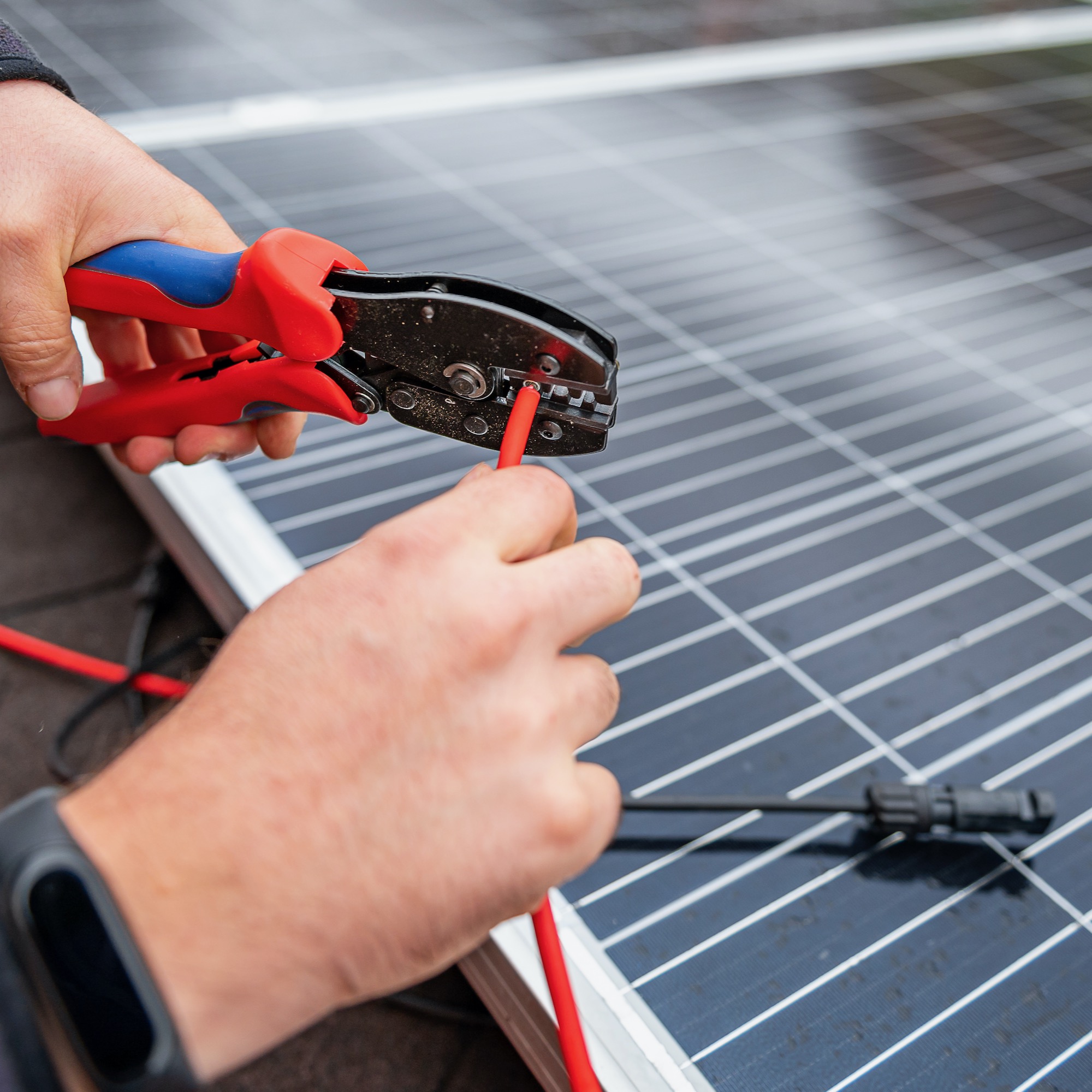
What else do I need to consider?
The battery is a big part of this shed solar panel setup, along with the inverter, cables and the charge controller.
1. Battery
Usually the battery that stores energy is a deep cycle 12V DC unit, looking similar to a car battery. You can add more as needed depending on how much power you want to store and have at your disposal. The "ah" rating determines how much power you will have.
A 100ah battery, for example, will typically run a 15 amp circular saw for up to nine hours. So that size battery array should be more than enough for most setups.
2. Inverter
The size of the inverter determines how much power can be drawn. So based on the item shown above, you need to work out the size of inverter required. To use another power tool example, a 2,000 watt solar array can run a 900W jigsaw for about two hours.
3. Charge controller
This regulates the power coming from the solar panels to the battery. Its primary function is to stop the battery overcharging or running flat. It also detects temperature and shuts off the system if the battery is in danger of overheating. Both functions ensure the battery lifetime is as long as possible.
4. Cables
To connect all this kit together you'll also need cables. These will need to be made for feeding DC current from the solar panels to the inverter. It's best to use a DC cable sizing tool to make sure you have the correct ones to suit your particular system setup.

As a veteran tech journalist of over two decades, Luke knows what makes a gadget tick but is also well aware of what you want to read about when doing your research. He has worked in this world for over 20 years and loves testing, reviewing and working with brands on new gadgets. Luke consults for many tech companies helping them create new gadgets. Expect concise words on everything from smart home tech and power tools to solar panels, cars, smartphones, speakers and plenty more besides.
-
 Are conservatories going to be banned in the UK?
Are conservatories going to be banned in the UK?Conservatory pros reveal the truth behind the rumours
By Rebecca Foster
-
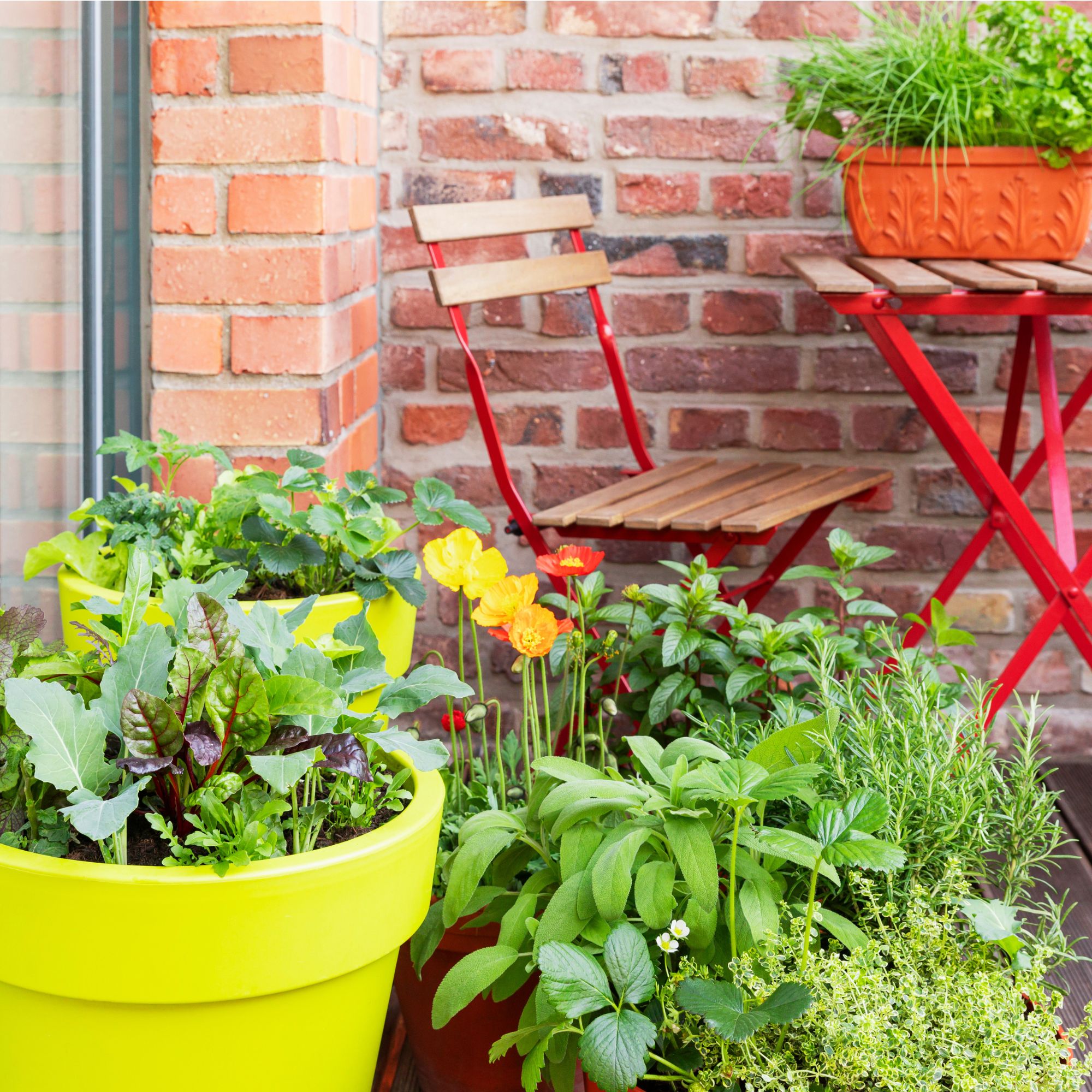 The herbs you should plant together for an easy-care herb garden – 6 expert-recommended combinations
The herbs you should plant together for an easy-care herb garden – 6 expert-recommended combinationsMake this year's herb garden effortless
By Sophie King
-
 IKEA has drenched its BILLY bookcase in this year’s ‘it’ colour - but you’ll have to act fast if you want to get your hands on one
IKEA has drenched its BILLY bookcase in this year’s ‘it’ colour - but you’ll have to act fast if you want to get your hands on oneI'm obsessed with this gorgeous limited-edition colourway
By Kezia Reynolds
